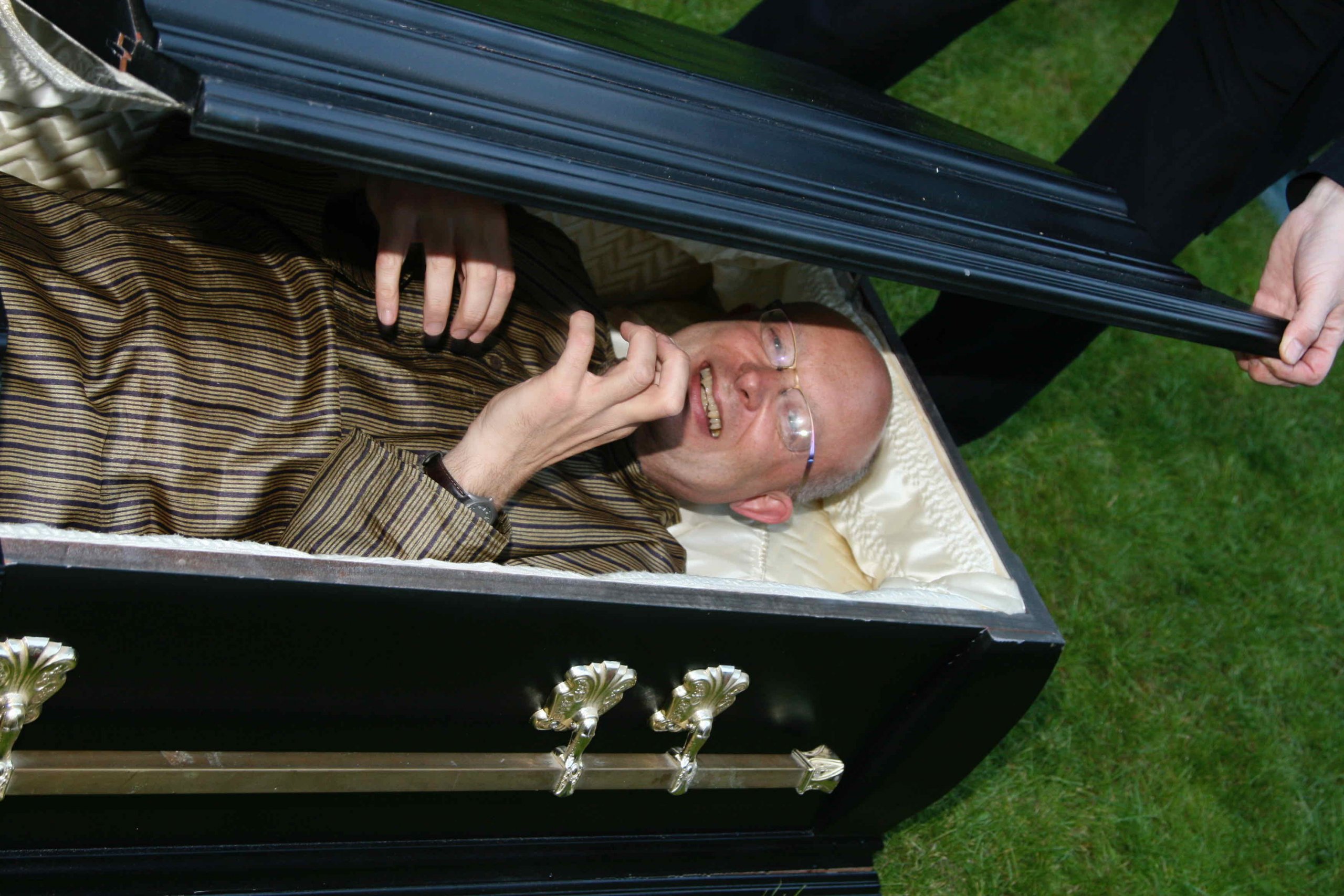Trying out my coffin. This and other fun exercises at my skills workshop in “Understanding and treating death anxiety”
So looking forward to seeing old friends at a real conference not on Zoom at EABCT in Belfast on 8th-11th September (actually it’s a hybrid, you can Zoom)
Background:
Death or existential anxiety is a term used to describe people’s fear or negative feelings towards death or dying. Some people may focus on their own death, such as ruminating on all the things they will miss out on after they die, or what it will be like to not exist anymore. Some people may experience doubts about the nature of existence itself, such as questioning what will happen to them after death or whether they will exist in a parallel world. Others may worry about the process of dying, such as whether their death will be painful, or what their final moments will be like. Some may be distressed at the idea of losing a loved one. They may worry about how they will cope with their loved ones’ death or that they will somehow cause the death of their loved one without meaning to. For some there is a phobic avoidance and fear of anything related to death (e.g. going near cemeteries or funeral parlours). All the experiences above are in many ways part of being human, but death anxiety is a problem when it is either sufficiently time-consuming, distressing or interfering in one’s life. The concept cuts across different diagnoses including some types of Health Anxiety, OCD, specific phobias, and panic disorder. Unfortunately, death anxiety may not be adequately targeted in standard protocols for these disorders and this workshop will try to remedy this with a specific focus of the fears of death and dying. CBT is the only evidence based treatment for death anxiety.
Learning Objectives:
By the end of the skills class, participants will
- Understand the phenomenology of a death and existential anxiety, and its relationship with the diagnoses of health anxiety, OCD, specific phobias, and panic.
- Be knowledgeable about a cognitive behavioral model and have a understanding of the cognitive processes and behaviours that maintain death anxiety. This includes the intolerance of uncertainty, magical thinking, the awfulness of dying, as well as avoidance, safety seeking and checking behaviours related to death.
- Develop alternative ways of thinking about common beliefs in death for example thoughts about the awfulness of not existing or the intolerance of not knowing will happen.
- Use appropriate exposure/ behavioural experiments for death and dying and consider what expectations are being tested. Fifteen different tasks will be discussed from writing out one’s funeral wishes and obituary, painting one’s coffin or collecting “memento mori”.
- Focus on living life to the full now as an alternative to focussing on death and dying
References:
Rachel E. Menzies and David Veale (2021). Free Yourself from Death Anxiety: A CBT Self-Help Guide for a Fear of Dying. Jessica Kingsley Publishers London and Philadelphia
Menzies, R, & Veale, D. (2021) Creative approaches to treating the dread of death and death anxiety. In: Existential Concerns and Cognitive-Behavioral Procedures: An Integrative Approach to Mental Health. Menzies, R.G, Menzies, R,E, Dingle, G. (Eds). Springer: New York.
Menzies, R.E., Zuccala, M., Sharpe, L., & Dar-Nimrod, I. (2018). The effects of psychosocial interventions on death anxiety: A meta-analysis and systematic review of randomised controlled trials. Journal of Anxiety Disorders, 59, 64-73.

